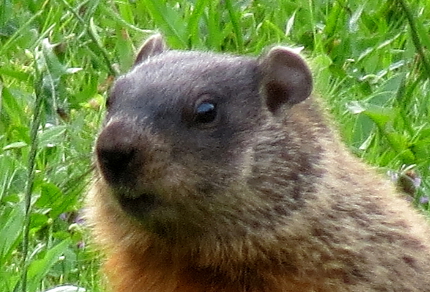Chunky groundhogs hibernate during winter and, according to North American folklore, predict whether spring will arrive early or there’ll be six more weeks of winter. This year’s groundhog prediction is bang on!
Yesterday, I heard male dark-eyed juncos singing territorial songs and saw a flock of American robins, returned to their breeding grounds after spring migration. However, I haven’t seen any sign of groundhogs (also called woodchucks), which are deep hibernators. Groundhogs (Marmota monax) are a kind of marmot, and like other marmots such as the hoary, yellow-bellied, and endangered Vancouver Island marmots, are large (2–4 kg) members of the squirrel family, the Sciuridae. Whereas tree squirrels like our red squirrels remain active throughout the winter, groundhogs, which are grazers, accumulate fat during the summer and autumn and then hibernate during the winter. A reduced body temperature and heart rate allow them to survive on their stored energy until spring arrives and the northern world greens up – much later than usual this year in Nova Scotia.

Groundhog (Marmota monax) (© Magi Nams)
Last summer, a groundhog visited our yard. During the evenings, I watched it graze on grass and clover in the lawn. One day, while weeding a large flowerbed, I found a massive pile of soil and a burrow entrance in the midst of excavated bee balm and iris plants. I knew instantly who the culprit was.
Groundhogs are diggers par excellance, with low-to-the-ground, chunky bodies and powerful forelimbs. They dig deep winter burrows below the frost line for hibernation and dig warm-weather burrows to use as escapes from predators and in which to raise young. One year, we had a flood of young groundhogs in our yard in late summer, which meant that a female had raised her litter in a nearby burrow. Vilis live-trapped the youngsters and released them far from our property.
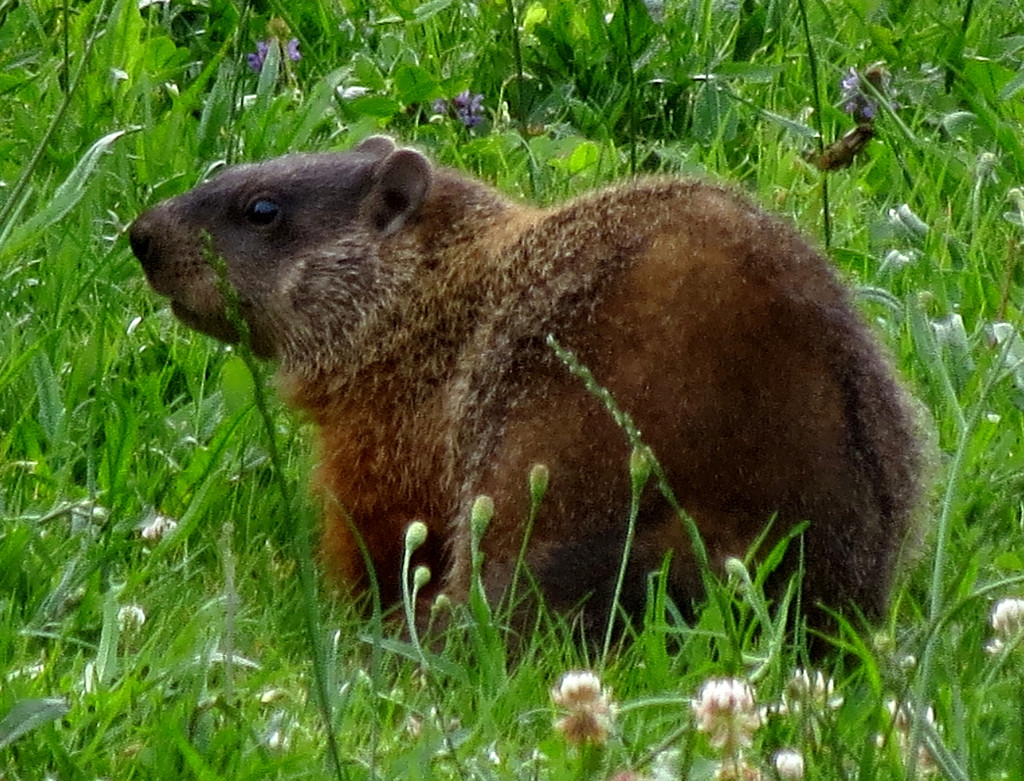
Groundhog (Marmota monax) in my backyard (© Magi Nams)
In North America, we have a rather whimsical day known as Groundhog Day, on February 2. As the folklore goes, if a groundhog looks out of its burrow on Groundhog Day and sees cloudy skies, we’ll have an early spring. If the day is sunny and the groundhog sees its shadow, we’re in for six more weeks of winter. Here in Nova Scotia, Groundhog Day 2015 was a decidedly sunny day. When Shubenacadie Sam – the province’s resident groundhog meteorologist at Shubenacadie Wildlfe Park – looked out of his burrow, the prediction was clearly for six more weeks of winter.
And that prediction was right – in a big way! Here we are, more than eight weeks after Groundhog Day, and Nova Scotia is still blanketed with snow, nearly all of which fell after late January. Blizzards and winter storms have arrived with astounding frequency. The spring equinox is two weeks past, and although day length is increasing at a joy-inspiring rate, the snow pack in our yard and meadows remains three to four feet deep.
I don’t normally wear snowshoes to fill our bird feeder or prune fruit trees, but I have this year. Never before, in the twenty-four years I’ve lived at Ravenhill, have I seen so much snow! We received three major storms in one week in late March – great incentive to hunker down and tackle my writing projects. The first book of my New Zealand family adventure trilogy Cry of the Kiwi will be launched to the world within a week. Exciting news as I wait for spring to really arrive!
This morning, the wind is up and the temperature has climbed above freezing, so some of that snow will melt. When I go for a walk, I’ll look for more migratory songbirds and keep my eyes peeled for those groundhogs.
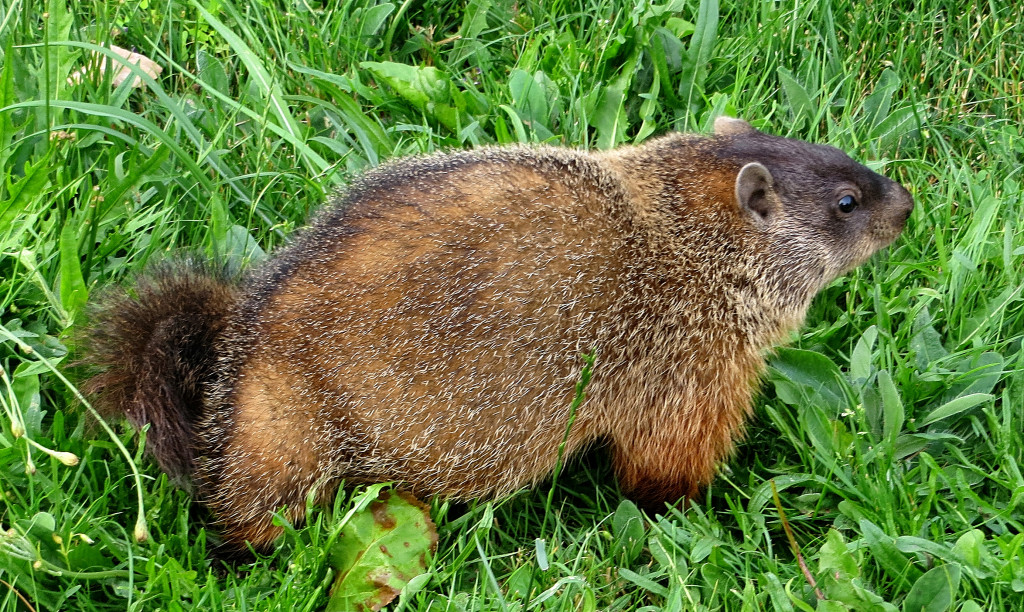
Groundhog (Marmota monax) (© Magi Nams)
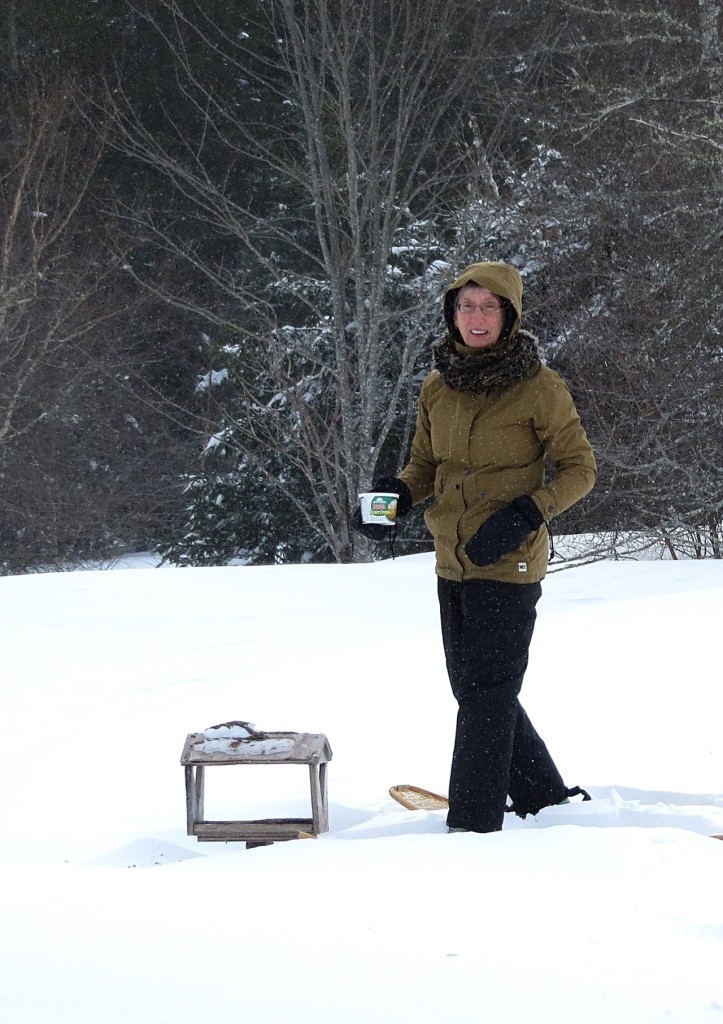
Feeding the birds on snowshoes (© Vilis Nams)
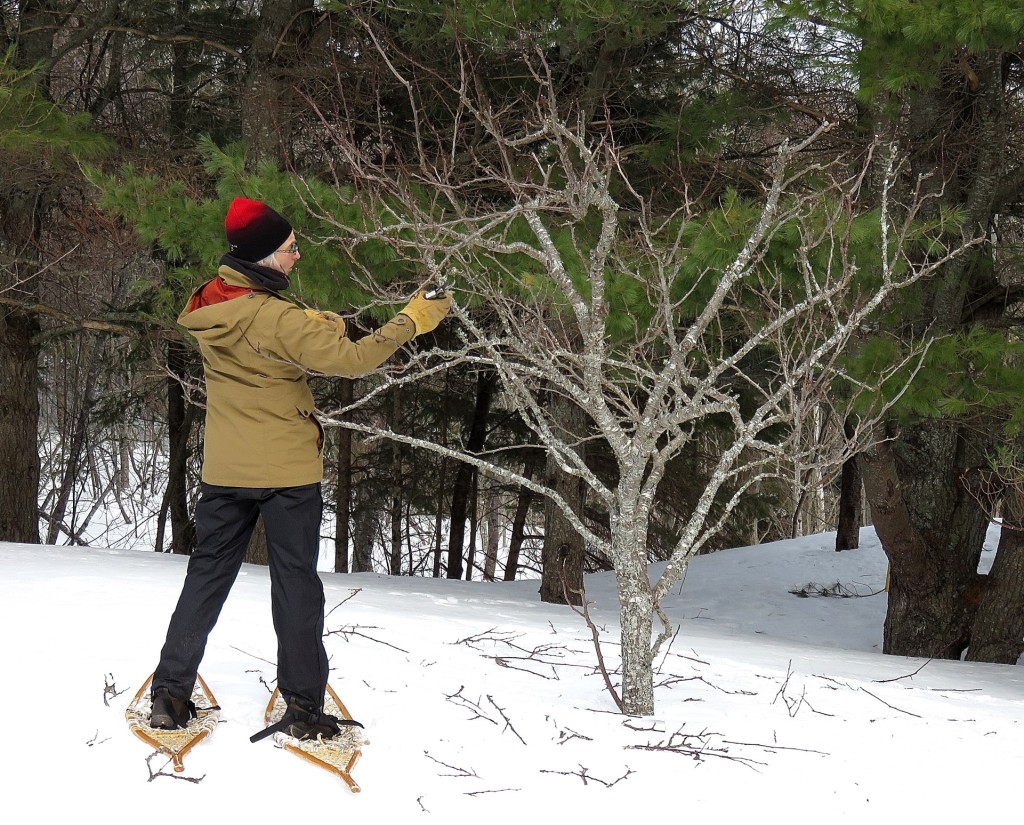
Pruning a plum tree on snowshoes (© Vilis Nams)
Reference: Adrian Forsyth. (1985). Mammals of the Canadian Wild. Camden East, ON: Camden House Publishing Ltd.

